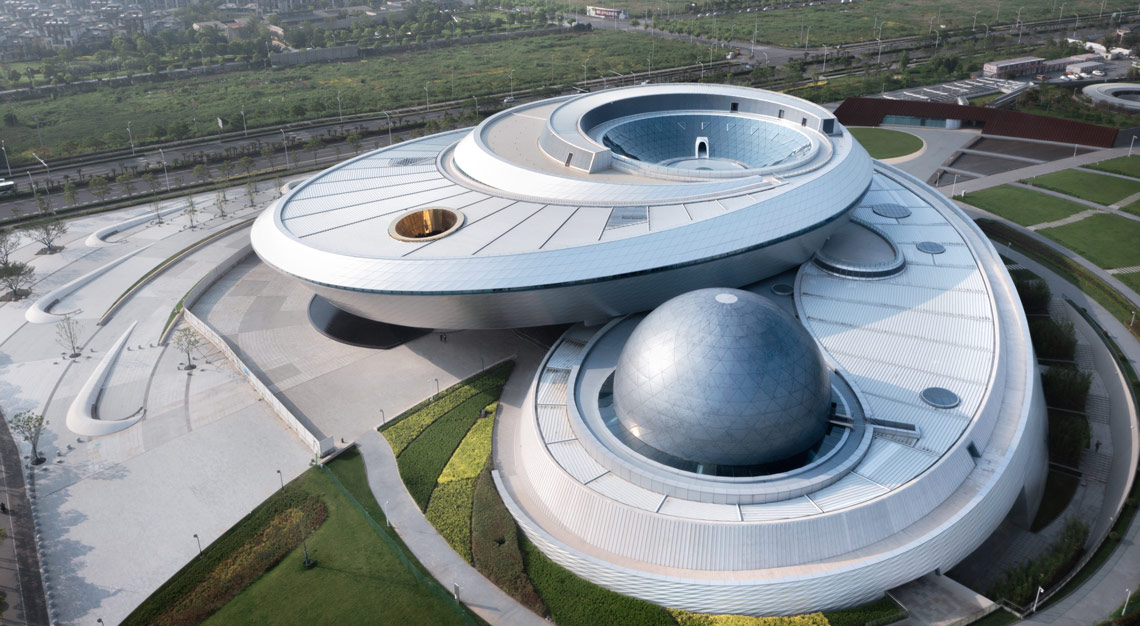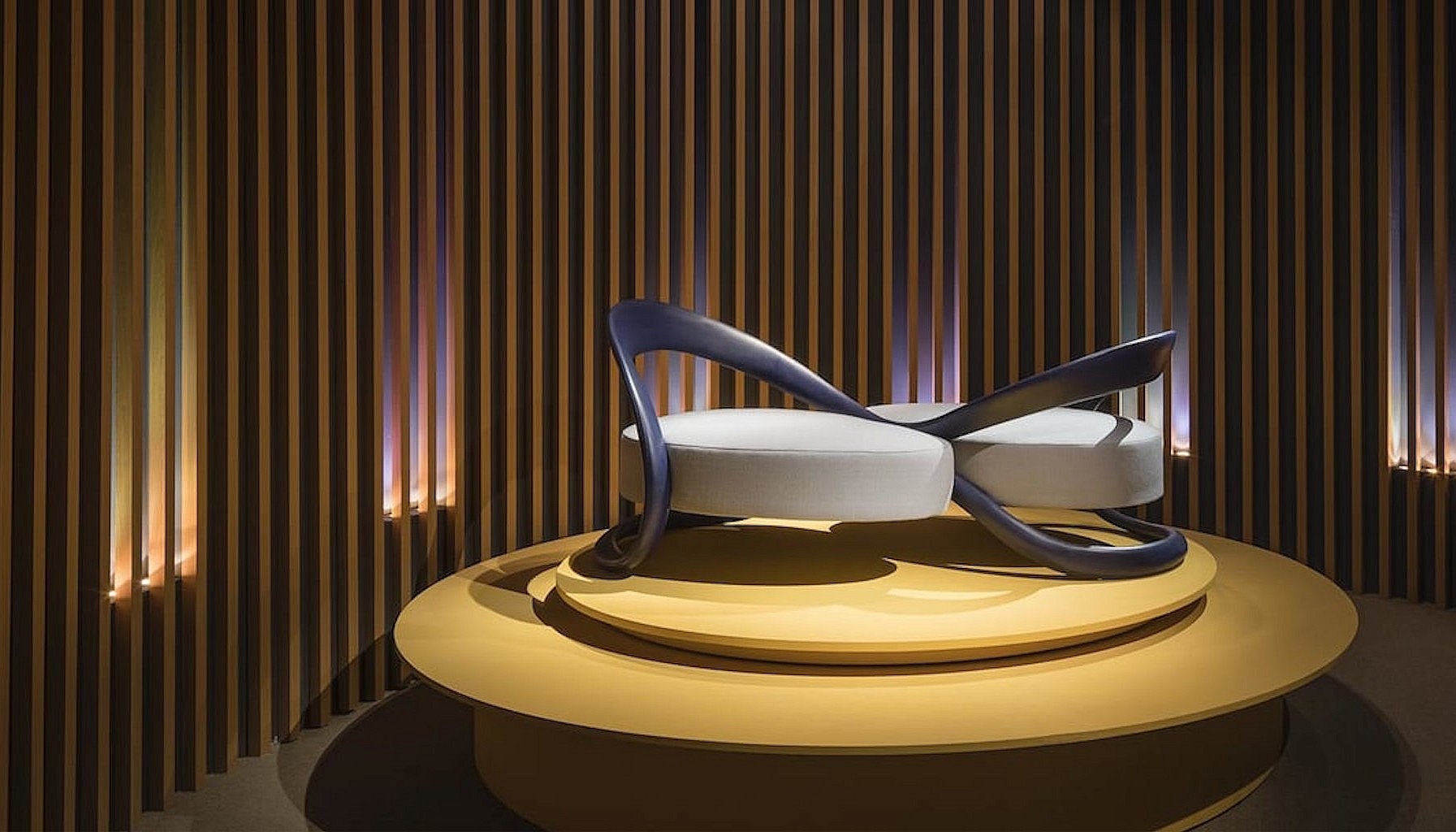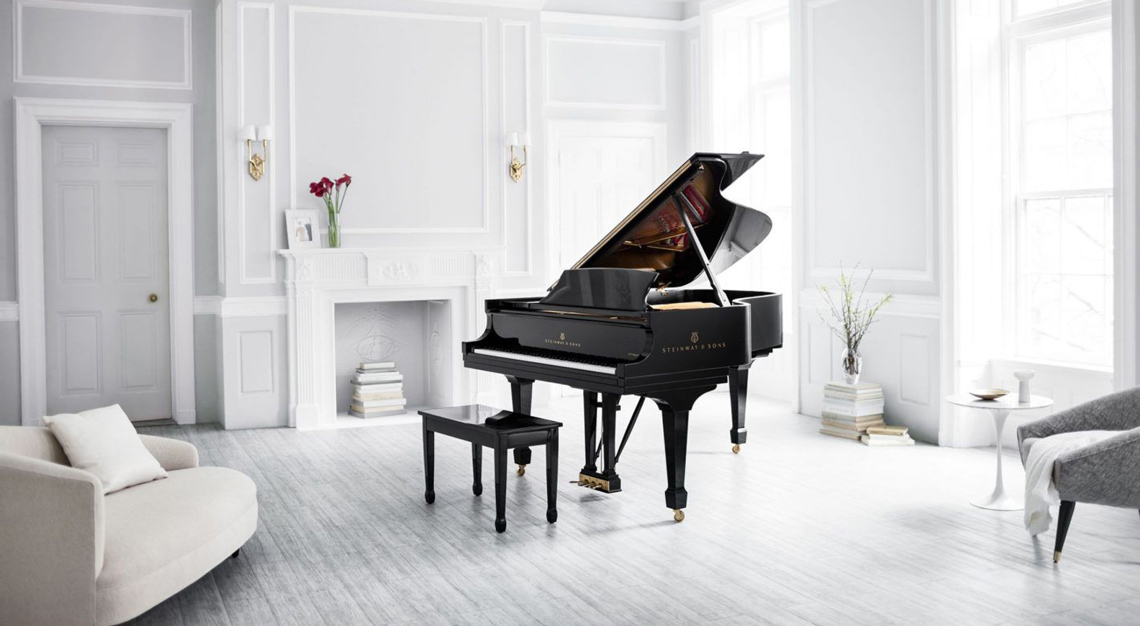Situated in Shanghai, the astronomy-themed 420,000 sq ft museum was constructed to follow the path of the Sun across the day
The visitor experience at the newly unveiled Shanghai Astronomy Museum unfolds with the building itself. You’ll first be greeted by the front cantilever of the upper galleries, and the stroll to the museum’s entrance underneath the cantilever is accompanied by magnificent views of an oculus and its figure of sunlight. New York-based architectural firm Ennead Architects has conceived a museum in Shanghai where both gravity and weightlessness are at play, fitting of its theme: astronomy. Visitors can expect to marvel over exhibitions that study the universe and home solar system, including engaging in immersive experiences, artefacts and tools of space exploration.
But come for the architecture, stay for the final ‘show’. The experience rounds off with a circular skylight that surrounds a sphere, creating a figure of light on the lower level of the museum interior. This figure is a complete ring at noon on the summer solstice when the sun is highest in the sky. Thomas J. Wong, design partner at Ennead Architects, delves into the arduous journey of building the architectural landmark.

The Shanghai Astronomy Museum was a mammoth undertaking. What does Ennead Architects hope to achieve with the museum?
In designing the Shanghai Astronomy Museum, we aimed to create a place that could provide a glimpse into the magnificence of the universe. We rarely ponder our elemental bond to the universe – we take for granted the Earth’s orbit around the sun and the moon’s path around our globe. To address this, the building itself is conceived as an ‘astronomical instrument’ which coordinates with the path of the sun across a day and the changing solar altitude in our sky through the seasons.
How did the team’s proposal stand out from those by other participating architects?
Throughout the four-month long international design competition, our goal was to create an architecture that spoke a spatial and experiential language originating from astronomy. Eventually, the notion of perpetual motion became the clarifying concept of the museum, and resulted in a coherent design that has an incredible richness and layering to it, especially with respect to shapes, forms and spaces. This, I feel, was certainly one of the distinguishing characteristics of our proposal.
Three instruments in the design — the Oculus, the Inverted Dome and the Sphere — each create its own distinct experience of orbital motion by tracking the movement of the sun through the sky. Demonstrating a principle similar to this include the Great Pyramids at Giza, Angkor Wat, Jantar Mantar and the Mayan Temples at Chichen Itza.
And why Shanghai?
Just as New York City is a fitting home for our Rose Center for Earth and Space, Shanghai is appropriate for the new Shanghai Astronomy Museum for two main reasons: it’s a global city and it’s the home of the Shanghai Science & Technology Museum, which could sponsor such an important project. Furthermore, China is right now a place of seemingly limitless possibilities with a thirst for global achievement and eyes set on space exploration.
Visitors can definitely learn a lot from the museum. What is a takeaway you wish for them?
My greatest aspiration for this museum is to stir visitors’ thoughts to expand beyond the human construct. I’d like to encourage all of us us to transcend our divisions and obsessions, and to examine ourselves individually and collectively in light of the fact that we are all together in a fragile, irreplaceable lifeboat that is Earth. This museum is an invitation for us to shift away from a myopic viewpoint and to discover the wonders in need of our care.
Personally, what does this project mean to you, Thomas?
Over the past eight years of working on this project, I had wondered if a museum of scale like this could ever be launched. Architecture is a slow process, and though it may seem glorious at the end, a huge part of the journey is about constant problem-solving, heads-down brain time and unwavering determination. I look at this project as the ambitious efforts of a relatively small group of humans who wish to inspire as many people as possible to discover our place in the universe.



Name two of the museum’s features which you find most breathtaking.
To me, the most breathtaking features of the museum are in the main atrium, which has been integrated with a spiralling ramp and an inverted dome cradled by a massive concrete tripod. The set piece is also a guiding point for visitors – marking where the experience begins, where one passes through in between exhibits, and where the final exposure to the sky occurs at the end of it all.
The spiralling ramp spins dynamically for two full revolutions while also rising up towards an oculus skylight at the bottom of the inverted dome. Meanwhile, the monumental concrete tripod leans gently to one side as if it’s about to take a step. It is this very precise construction that lures your gaze toward the sky.
How do you think a project like this would lend an impact to astronomy education?
We made this building in the hope of sharing excitement about the known and yet-to-be-discovered wonders of space, as a place where the educational mission of science is enmeshed with an architecture, born of deep conceptual origins, that itself is also teaching. The entire experience is meant to place visitors in a purposeful and direct engagement with real astronomical phenomena, emphasizing the relationship between human and sky, with the hope it will expand our often-myopic human perspective.
The museum is further meant to inspire more questions than it answers and in turn spark a curiosity for visitors to want to learn more about our universe. We want people to ask themselves about the nature of places that are “out there,” so incomprehensibly far from Earth and unimaginably strange, yet governed by many of the same physical laws of science.
Share the biggest obstacle you faced when executing this project.
One of the most challenging technical aspects was building the cantilever at the entry of the museum; not only because it measures an incredible distance of 40 meters.
The structural engineers at first proposed conventional, straight steel trusses that extended off a giant piece of concrete, but they were in conflict with the overall geometry of the architectural idea. We worked with them over the course of several months and with other expert advisors to conceive a curved belt truss solution that follows the façade perimeter. It’s a much more elegant solution.
How do you think Ennead Architects would inspire its industry counterparts with this museum?
I hope that this project inspires others in the field to center their work around an architecture that serves the purpose of the institution. One of the primary goals that informed the design of the Shanghai Astronomy Museum was the need to expand the modern human perspective, to create an experience that strengthens our awareness of the realm beyond our planet.






